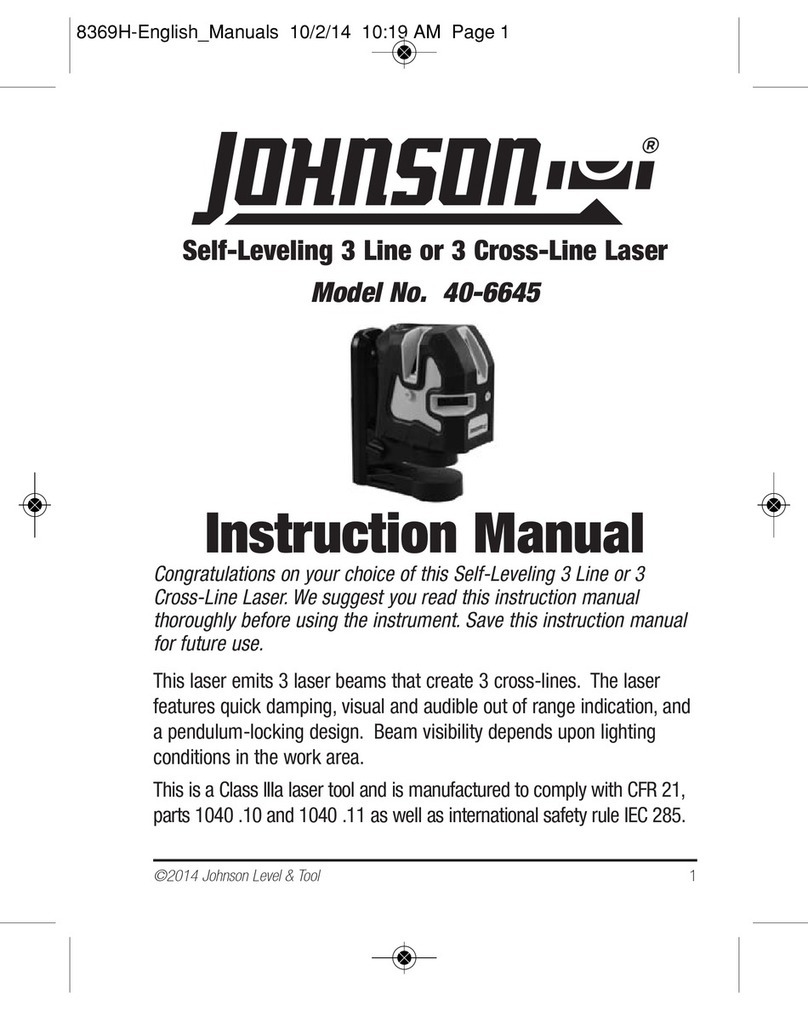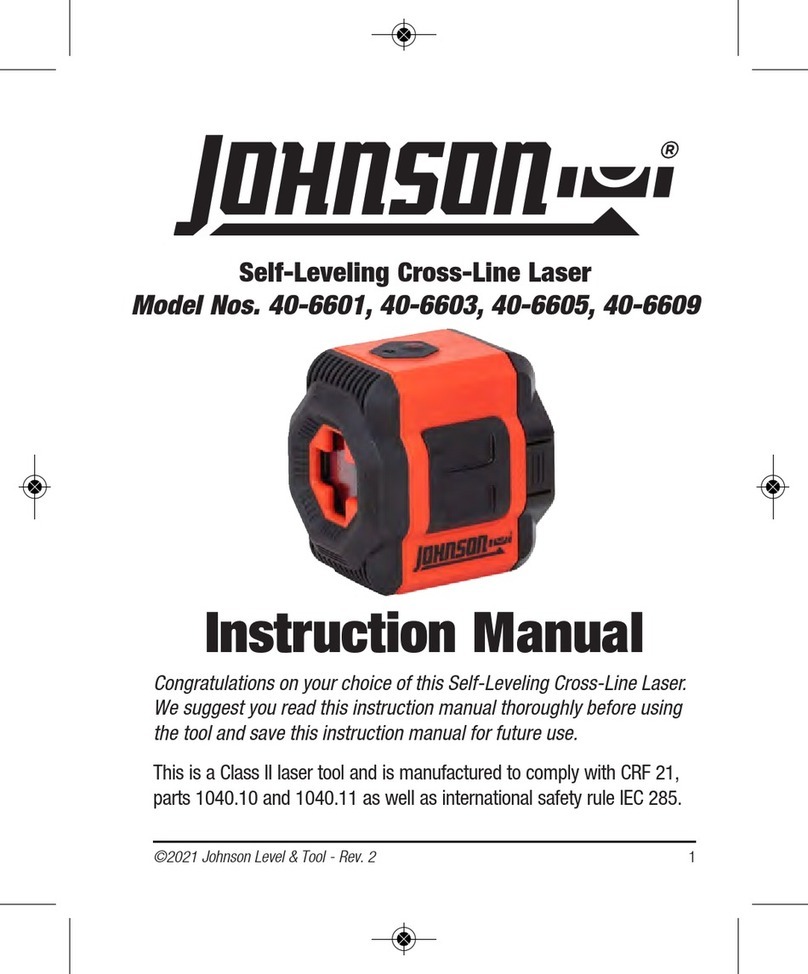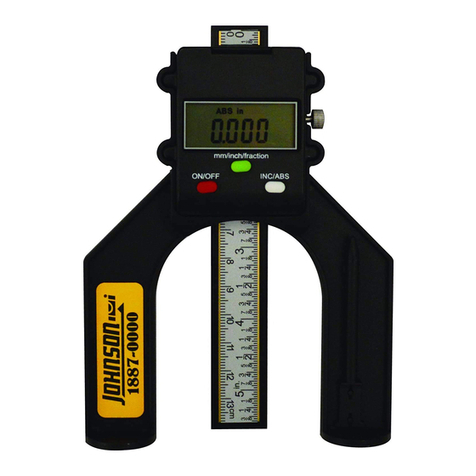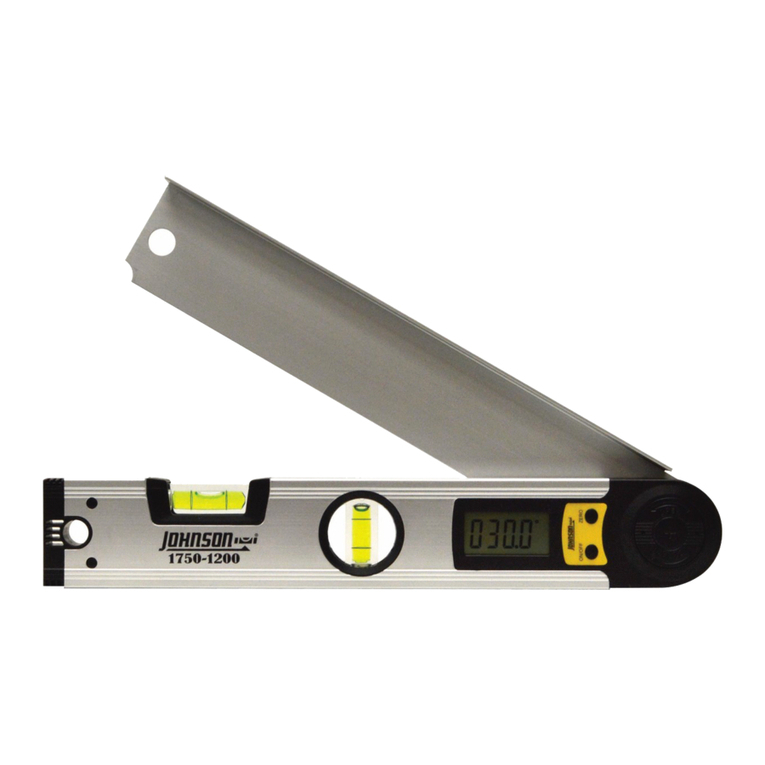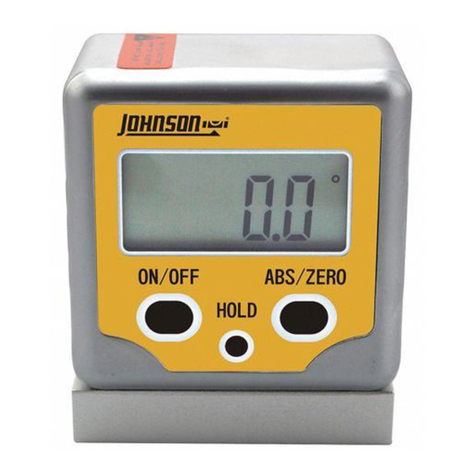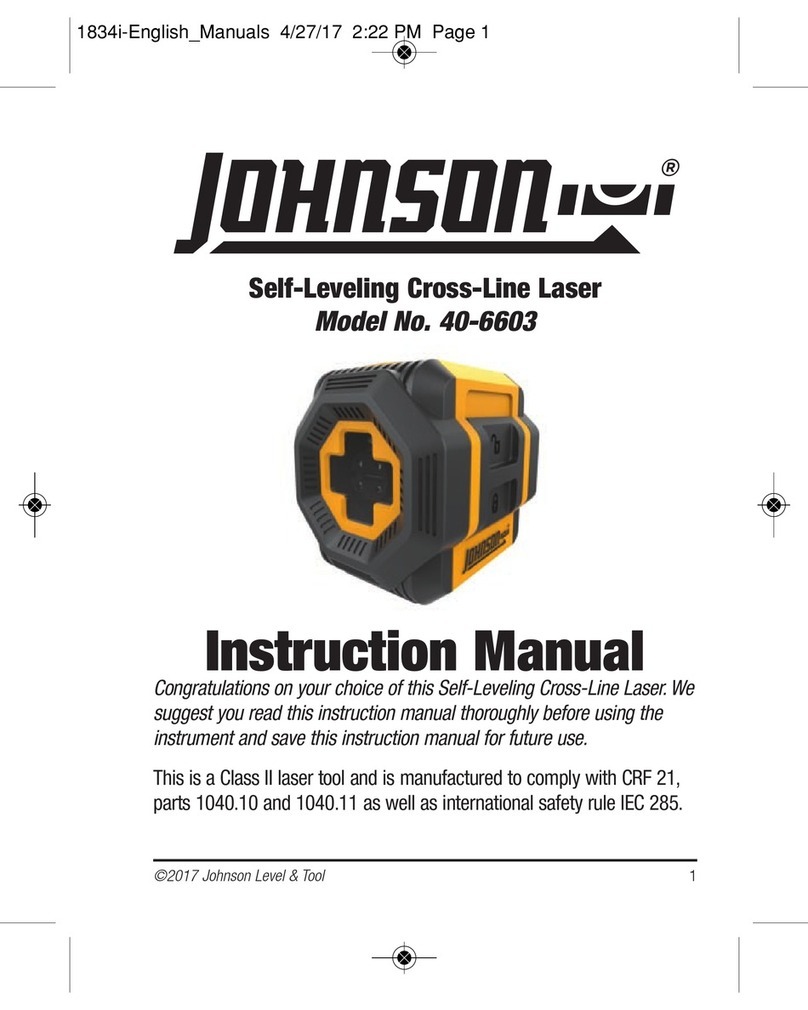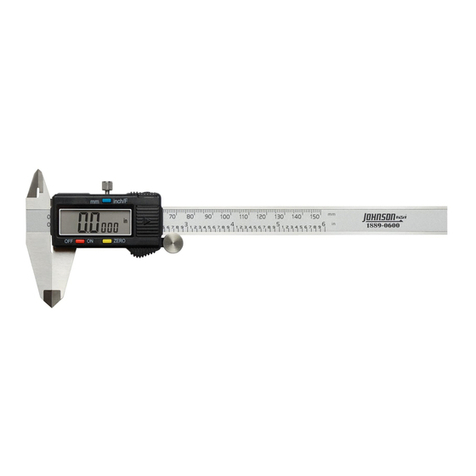Thank you for purchasing this JLX® Tracking Rotary Laser. The JLX®
series represents Johnson’s most technologically advanced tools,
designed to help you work smarter and faster. This tool features:
• Automatic tracking of the beam to the detector
• GreenBrite® technology
• Single and dual slope
• Tilt alarm
• Scan mode
• Visual/audible out-of-level alarms
40-6590 & 40-6590I Tracking Rotary Laser Quick Start Guide
GETTING STARTED
1. Insert batteries into the laser, detector and remote.
Note: The laser will stop receiving remote/detector signals after
30 minutes of inactivity. Press on the laser to re-enable.
2. Tap to power on the laser.
In horizontal mode, the laser will self-level then begin to rotate.
In vertical mode, it will emit a plumb-down alignment laser.
Note: The laser will flash if it’s beyond its self leveling range.
3. Tap to begin rotation or adjust rotational speed.
4. Tap on the detector to power it on.
5. Tap to set the detector volume level.
6. Press and hold to turn on the detector’s backlight.
7. Tap to set the detector’s units - mm, inches or inches fraction.
8. Tap to set the detector’s sensitivity. Sensitivity will always
display in millimeters: 1mm, 5mm or 9mm (0.04”, 0.2”, 0.35”).
9. To adjust the detector zero point press . Zero osets will clear
when the detector is powered o. Maximum adjustability is 0.75”.
TRACKING MODE
Typical Applications Include:
• Drywall track installation
• Wall framing
• Tilt-up wall installation
• Pipe and drain installation
• Orthogonal layout
40-6590/40-6590I REV 1
www.johnsonlevel.com/manuals
We want to get you up and running as quickly as possible - but this quick start guide is not a replacement for reading and understanding
your operator’s manual! For complete safety & operating instructions, scan the QR code to the right to download your manual.
SINGLE-AXIS SLOPE MODE
This laser features tracking to automatically slope the beam in either
the X or Y axis. The beam slope adjusts until the beam intersects
the detector’s zero point - helpful for simplifying layout work and
connecting reference points with laser lines.
To use the rotary in tracking mode:
1. Power on the laser and the detector by pressing .
2. Set your desired slope axis by pressing on the detector.
3. Press and hold on the detector. The blue LED will illuminate.
4. Locate your detector’s zero point over the desired target.
5. The rotary will begin to sweep through a +/-5° arc until it locates
the detector’s receiving window. It will stop when it intersects the
zero point of the detector.
6. The detector’s blue LED will turn o, and slope will be fixed.
7. The detector will now function like a standard laser detector. You
can locate your interim grade points without aecting the slope
of the laser.
Single-axis slope mode angles the laser beam in either the X or Y
axis. If bumped, the laser will re-level and maintain slope.
1. Press and hold on the remote (not the detector) for 3
seconds to enable single-slope mode.
2. The laser’s X-LED will be solid & the Y LED blinking, indicating
slope can be set for the X-axis. Press again to toggle axes.
3. Use the slope buttons or to adjust slope. Tap for small
adjustments, or press and hold for larger adjustment.
Pro Tip: Set a specific slope using a grade rod and detector.
1. Set the detector a known distance from the laser. Find grade.
2. Raise or lower the detector the required amount, then adjust
slope until the detector reads the beam.
3. For example, to slope 1/4” per 10’, set the detector 10’ from the
laser and find grade. Lower the detector 1/4” and slope the laser
beam until the detector locates the beam again.
